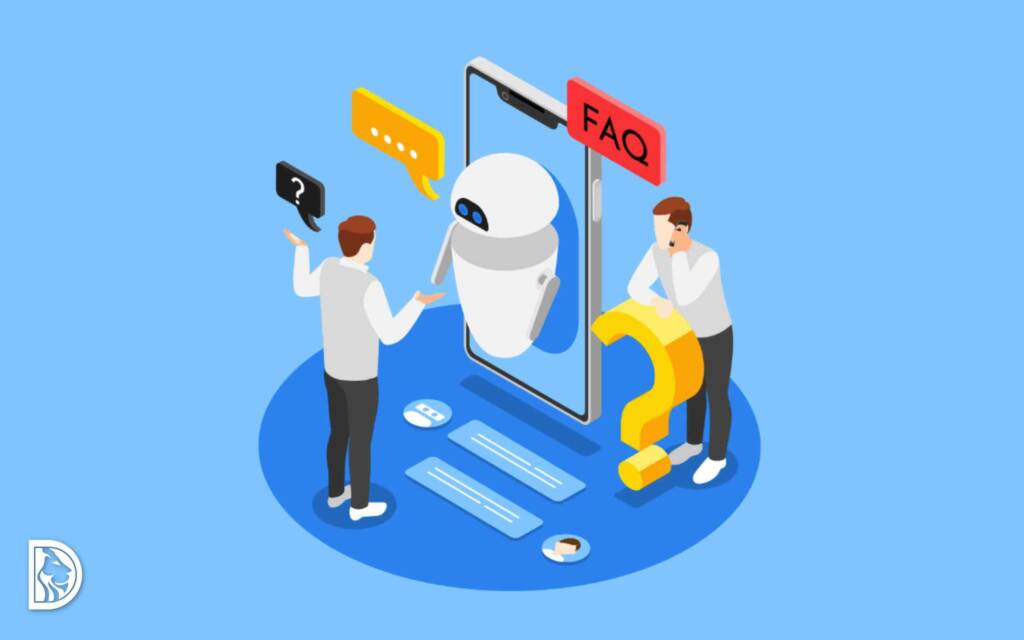App development can be an expensive and complicated process, but you can reduce complexity if you put in the right amount of planning upfront. With careful attention and thorough preparation, you can launch your mobile app with minor headaches, ensuring that your new product gets off for users. Here are five steps to get started on your mobile app’s journey from ideation to launch and beyond.
Step 0: Determine if you need a mobile app
The first step in launching a mobile app is determining if you really need one. For example, if your business depends on people visiting a location or spending time with you face-to-face, then you probably won’t need a mobile app, at least not in a direct way, if your business is mostly based online (for example, by selling products or services), then probably you will need a mobile app.
You also should make sure that your target market has access to a mobile device. The Pew Research Center estimates that 91% of Americans own a cell phone, and 83% of American adults have a smartphone. The time is right for you if your target market has access to both cell phones and smartphones. However keep in mind previous research was done for the US market, you should take a look at your country.
The next step should be to design an MVP version that allows you to prove the concept before investing a lot of energy (and money) in a full-blown idea, with many features that might be good but are not core to the business logic.
Step 1: Before your Launch Day.
Everyone knows launch day is coming, but many mobile app developers ignore a potentially crucial period just before your launch: The development process. It’s easy to get bogged down in coding and polishing during your final weeks of product building, but proper testing will set you up for a smoother launch experience.
Choose a reasonably prudent launch date to allow time for thorough testing.
Step 2: Creating the right development process
Before you begin developing your app, create a development process and get buy-in from everyone who will potentially be using your app. This initial step is crucial—without a development process with continuous feedback, it’s easy for scope creep and unforeseen snags to derail your project later on.
The key for creating an effective development process lies in communication and feedback: You need to make sure that everyone involved understands what their role are and how they fit into your overall plan. Remember, you’re not just developing a mobile app—you’re building a product to heal a pain.
Every aspect of your product should be designed with efficiency and simplicity.
Step 3: Finding the right people
Who will make up your app development team? Are they a convenient counselor for recommending the technology stack that best fits your product?. How many people are involved? Understanding how many different roles you need and who can fill them will help you determine what your budget will need.
Step 4: Working with developers
You’ve worked hard on your idea, and you’re now ready to see it coming to life. At first, communication with developers might be a bit tough—after all, you both speak different languages. When developing apps for smartphones or tablets, most developers communicate using SCRUM (or an Agile development methodology) – depending on how long your project takes and how fast they deliver it.
Don’t panic if they prefer another method of software development.




























52 Responses
xo9cv15J6qSyqWRQP1P1904sSv09BxVLuITIyZ9aR2psPJOruu1Sf2SJ491CQ2VL
buy amoxicillin generic – order amoxil pills buy amoxicillin online cheap
forcan for sale online – https://gpdifluca.com/ buy fluconazole 200mg pill
escitalopram price – https://escitapro.com/# escitalopram 10mg tablet
buy cenforce 100mg online – cenforce rs cenforce ca
buying generic cialis – https://ciltadgn.com/ no prescription cialis
buy cialis online free shipping – this compounded tadalafil troche life span
order ranitidine 150mg without prescription – https://aranitidine.com/# order ranitidine 150mg for sale
100 viagra pills – https://strongvpls.com/ order viagra with mastercard
Greetings! Very serviceable suggestion within this article! It’s the little changes which wish make the largest changes. Thanks a portion for sharing! https://buyfastonl.com/furosemide.html
The depth in this serving is exceptional. click
This is a theme which is virtually to my fundamentals… Numberless thanks! Exactly where can I find the phone details an eye to questions? https://ursxdol.com/levitra-vardenafil-online/
I couldn’t resist commenting. Well written! https://prohnrg.com/product/cytotec-online/
I couldn’t resist commenting. Adequately written! prix du viagra
I couldn’t hold back commenting. Profoundly written!
https://doxycyclinege.com/pro/celecoxib/
With thanks. Loads of conception! http://seafishzone.com/home.php?mod=space&uid=2293996
dapagliflozin pills – https://janozin.com/ dapagliflozin over the counter
orlistat brand – this orlistat order
Greetings! Extremely productive par‘nesis within this article! It’s the petty changes which choice turn the largest changes. Thanks a a quantity for sharing! https://www.forum-joyingauto.com/member.php?action=profile&uid=49459
You can protect yourself and your dearest by way of being heedful when buying medicine online. Some pharmacy websites manipulate legally and provide convenience, secretiveness, rate savings and safeguards over the extent of purchasing medicines. buy in TerbinaPharmacy https://terbinafines.com/product/levitra.html levitra
This is the stripe of topic I have reading. prix du propecia
Thanks towards putting this up. It’s evidently done.
**mind vault**
mind vault is a premium cognitive support formula created for adults 45+. It’s thoughtfully designed to help maintain clear thinking
**mind vault**
mind vault is a premium cognitive support formula created for adults 45+. It’s thoughtfully designed to help maintain clear thinking
**sugarmute**
sugarmute is a science-guided nutritional supplement created to help maintain balanced blood sugar while supporting steady energy and mental clarity.
**glpro**
glpro is a natural dietary supplement designed to promote balanced blood sugar levels and curb sugar cravings.
**prostadine**
prostadine is a next-generation prostate support formula designed to help maintain, restore, and enhance optimal male prostate performance.
**prodentim**
prodentim an advanced probiotic formulation designed to support exceptional oral hygiene while fortifying teeth and gums.
**vittaburn**
vittaburn is a liquid dietary supplement formulated to support healthy weight reduction by increasing metabolic rate, reducing hunger, and promoting fat loss.
**glucore**
glucore is a nutritional supplement that is given to patients daily to assist in maintaining healthy blood sugar and metabolic rates.
**synaptigen**
synaptigen is a next-generation brain support supplement that blends natural nootropics, adaptogens
**nitric boost**
nitric boost is a dietary formula crafted to enhance vitality and promote overall well-being.
**wildgut**
wildgutis a precision-crafted nutritional blend designed to nurture your dog’s digestive tract.
**mitolyn**
mitolyn a nature-inspired supplement crafted to elevate metabolic activity and support sustainable weight management.
**zencortex**
zencortex contains only the natural ingredients that are effective in supporting incredible hearing naturally.
**yusleep**
yusleep is a gentle, nano-enhanced nightly blend designed to help you drift off quickly, stay asleep longer, and wake feeling clear.
**breathe**
breathe is a plant-powered tincture crafted to promote lung performance and enhance your breathing quality.
**pinealxt**
pinealxt is a revolutionary supplement that promotes proper pineal gland function and energy levels to support healthy body function.
**energeia**
energeia is the first and only recipe that targets the root cause of stubborn belly fat and Deadly visceral fat.
**prostabliss**
prostabliss is a carefully developed dietary formula aimed at nurturing prostate vitality and improving urinary comfort.
**boostaro**
boostaro is a specially crafted dietary supplement for men who want to elevate their overall health and vitality.
**potentstream**
potentstream is engineered to promote prostate well-being by counteracting the residue that can build up from hard-water minerals within the urinary tract.
**hepato burn**
hepato burn is a premium nutritional formula designed to enhance liver function, boost metabolism, and support natural fat breakdown.
**hepato burn**
hepato burn is a potent, plant-based formula created to promote optimal liver performance and naturally stimulate fat-burning mechanisms.
**flow force max**
flow force max delivers a forward-thinking, plant-focused way to support prostate health—while also helping maintain everyday energy, libido, and overall vitality.
**prodentim**
prodentim is a forward-thinking oral wellness blend crafted to nurture and maintain a balanced mouth microbiome.
**cellufend**
cellufend is a natural supplement developed to support balanced blood sugar levels through a blend of botanical extracts and essential nutrients.
**neurogenica**
neurogenica is a dietary supplement formulated to support nerve health and ease discomfort associated with neuropathy.
**revitag**
revitag is a daily skin-support formula created to promote a healthy complexion and visibly diminish the appearance of skin tags.
**sleep lean**
sleeplean is a US-trusted, naturally focused nighttime support formula that helps your body burn fat while you rest.
What a comprehensive overview.
Your blog is a breath of fresh air in the often stagnant world of online content. Your thoughtful analysis and insightful commentary never fail to leave a lasting impression. Thank you for sharing your wisdom with us.